Process Intensification of 2,2′-(4-Nitrophenyl) Dipyrromethane Synthesis with a SO3H-Functionalized Ionic Liquid Catalyst in Pickering-Emulsion-Based Packed-Bed Microreactors
Abstract
:1. Introduction
2. Experimental Section
2.1. Chemicals
2.2. Equipment and Analysis Method
2.3. Materials Synthesis
2.3.1. Synthesis of 3-Triethylammonium Propane Sulfonic Hydrogen Sulfate
2.3.2. Synthesis of Surface-Modified Silica Nanoparticles
2.3.3. Synthesis of the Ionic Liquid-Based Pickering Emulsion
2.3.4. Synthesis of 2,2′-(4-Nitrophenyl) Dipyrromethane in Different Reactors
3. Result and Discussion
3.1. Characterization of the [TEAPS][HSO4] Ionic Liquid and Surface-Modified SiO2 Nanoparticles
3.2. Stability of the Ionic-Liquid-Based Pickering Emulsion
3.3. Reaction Performance of 2,2′-(4-Nitrophenyl) Dipyrromethane Synthesis in the Pickering-Emulsion-Based Packed-Bed Microreactor
4. Conclusions
Author Contributions
Funding
Conflicts of Interest
References
- Golf, H.R.; Reissig, H.U.; Wiehe, A. Synthesis of SF5-Substituted Tetrapyrroles, Metalloporphyrins, BODIPYs, and Their Dipyrrane Precursors. J. Org. Chem. 2015, 80, 5133–5143. [Google Scholar] [CrossRef] [PubMed]
- Ak, M.; Gancheva, V.; Terlemezyan, L.; Tanyeli, C.; Toppare, L. Synthesis of a dipyrromethane functionalized monomer and optoelectrochromic properties of its polymer. Eur. Polym. J. 2008, 44, 2567–2573. [Google Scholar] [CrossRef]
- Lee, S.-H.; Larsen, A.G.; Ohkubo, K.; Cai, Z.-L.; Reimers, J.R.; Fukuzumi, S.; Crossley, M.J. Long-lived long-distance photochemically induced spin-polarized charge separation in β,β′-pyrrolic fused ferrocene-porphyrin-fullerene systems. Chem. Sci. 2012, 3, 257–269. [Google Scholar] [CrossRef]
- Maeda, C.; Toyama, S.; Okada, N.; Takaishi, K.; Kang, S.; Kim, D.; Ema, T. Tetrameric and Hexameric Porphyrin Nanorings: Template Synthesis and Photophysical Properties. J. Am. Chem. Soc. 2020, 142, 15661–15666. [Google Scholar] [CrossRef] [PubMed]
- Wu, Y.; Feng, J.; Gao, H.; Feng, X.; Jiang, L. Superwettability-Based Interfacial Chemical Reactions. Adv. Mater. 2019, 31, e1800718. [Google Scholar] [CrossRef]
- Vigmond, S.; Chang, M.; Kallury, K.; Thompson, M. Direct Synthesis of Aryldipyrromethanes. Temhedron Lett. 1994, 35, 2455–2458. [Google Scholar] [CrossRef]
- Singhal, A.; Singh, S.; Chauhan, S.M.S. Synthesis of dipyrromethanes in aqueous media using boric acid. Arkivoc 2017, 2016, 144–151. [Google Scholar] [CrossRef] [Green Version]
- Sobral, A.J.F.N.; Rebanda, N.G.C.L.; da Silva, M.; Lampreia, S.H.; Ramos Silva, M.; Beja, A.M.; Paixão, J.A.; Rocha Gonsalves, A.M.D.A. One-step synthesis of dipyrromethanes in water. Tetrahedron Lett. 2003, 44, 3971–3973. [Google Scholar] [CrossRef] [Green Version]
- Zhang, Y.; Liang, J.; Shang, Z. Fast and Eco-friendly Synthesis of Dipyrromethanes by H2SO4 SiO2 Catalysis under Solvent-free Conditions. Chin. J. Chem. 2010, 28, 259–262. [Google Scholar] [CrossRef]
- Amarasekara, A.S. Acidic Ionic Liquids. Chem. Rev. 2016, 116, 6133–6183. [Google Scholar] [CrossRef] [PubMed]
- Chatterjee, R.; Mahato, S.; Santra, S.; Zyryanov, G.V.; Hajra, A.; Majee, A. Imidazolium Zwitterionic Molten Salt: An Efficient Organocatalyst under Neat Conditions at Room Temperature for the Synthesis of Dipyrromethanes as well as Bis(indolyl)methanes. ChemistrySelect 2018, 3, 5843–5847. [Google Scholar] [CrossRef]
- Baskın, D.; Çetinkaya, Y.; Balci, M. Synthesis of dipyrrolo-diazepine derivatives via intramolecular alkyne cyclization. Tetrahedron 2018, 74, 4062–4070. [Google Scholar] [CrossRef]
- Senapak, W.; Saeeng, R.; Jaratjaroonphong, J.; Kasemsuk, T.; Sirion, U. Green synthesis of dipyrromethanes in aqueous media catalyzed by SO3H-functionalized ionic liquid. Org. Biomol. Chem. 2016, 14, 1302. [Google Scholar] [CrossRef]
- Fang, D.; Shi, Q.-R.; Cheng, J.; Gong, K.; Liu, Z.-L. Regioselective mononitration of aromatic compounds using Brønsted acidic ionic liquids as recoverable catalysts. Appl. Catal. A Gen. 2008, 345, 158–163. [Google Scholar] [CrossRef]
- Naik, R.; Joshi, P.; Kaiwar, S.P.; Deshpande, R.K. Facile synthesis of meso-substituted dipyrromethanes and porphyrins using cation exchange resins. Tetrahedron 2003, 59, 2207–2213. [Google Scholar] [CrossRef]
- Littler, B.J.; Miller, M.A.; Hung, C.H.; Wagner, R.W.; O’Shea, D.F.; Boyle, P.D. Refined synthesis of 5-substituted dipyrromethanes. J. Org. Chem. 1999, 64, 1391. [Google Scholar] [CrossRef]
- Jejurkar, V.P.; Khatri, C.K.; Chaturbhuj, G.U.; Saha, S. Environmentally Benign, Highly Efficient and Expeditious Solvent-Free Synthesis of Trisubstituted Methanes Catalyzed by Sulfated Polyborate. ChemistrySelect 2017, 2, 11693–11696. [Google Scholar] [CrossRef]
- Fang, D.; Zhou, X.; Ye, Z.; Liu, Z. Brønsted Acidic Ionic Liquids and Their Use as Dual Solvent-Catalysts for Fischer Esterifications. Ind. Eng. Chem. Res. 2006, 45, 7982–7984. [Google Scholar] [CrossRef]
- Choudhury, H.A.; Malani, R.S.; Moholkar, V.S. Acid catalyzed biodiesel synthesis from Jatropha oil: Mechanistic aspects of ultrasonic intensification. Chem. Eng. J. 2013, 231, 262–272. [Google Scholar] [CrossRef]
- Metzger, J.O. Solvent-Free Organic Syntheses. Angew. Chem. Int. Ed. 1998, 37, 21. [Google Scholar] [CrossRef]
- Menger, F.M.; Rhee, J.U.; Rhee, H.K. Applications of surfactants to synthetic organic chemistry. J. Org. Chem. 1975, 40, 3803–3805. [Google Scholar] [CrossRef]
- Jing, R.; Tang, J.; Zhang, Q.; Chen, L.; Ji, D.; Yu, F.; Lu, M.; Ji, J.; Wang, J. An insight into the intensification of aqueous/organic phase reaction by the addition of magnetic polymer nanoparticles. Chem. Eng. J. 2015, 280, 265–274. [Google Scholar] [CrossRef]
- Zhang, M.; Wei, L.; Chen, H.; Du, Z.; Binks, B.P.; Yang, H. Compartmentalized Droplets for Continuous Flow Liquid-Liquid Interface Catalysis. J. Am. Chem. Soc. 2016, 138, 10173–10183. [Google Scholar] [CrossRef] [PubMed]
- Zhang, M.; Ettelaie, R.; Yan, T.; Zhang, S.; Cheng, F.; Binks, B.P.; Yang, H. Ionic Liquid Droplet Microreactor for Catalysis Reactions Not at Equilibrium. J. Am. Chem. Soc. 2017, 139, 17387–17396. [Google Scholar] [CrossRef] [PubMed]
- Chen, H.; Zou, H.; Hao, Y.; Yang, H. Flow Pickering Emulsion Interfaces Enhance Catalysis Efficiency and Selectivity for Cyclization of Citronellal. ChemSusChem 2017, 10, 1989–1995. [Google Scholar] [CrossRef] [PubMed]
- Tanaka, Y.; Shimizu, Y. Integration of a Reconstituted Cell-free Protein-synthesis System on a Glass Microchip. Anal. Sci. 2015, 31, 67–71. [Google Scholar] [CrossRef] [Green Version]
- Zaborenko, N.; Linder, R.J.; Braden, T.M.; Campbell, B.M.; Hansen, M.M.; Johnson, M.D. Development of Pilot-Scale Continuous Production of an LY2886721 Starting Material by Packed-Bed Hydrogenolysis. Org. Process. Res. Dev. 2015, 19, 1231–1243. [Google Scholar] [CrossRef]
- Denčić, I.; de Vaan, S.; Noël, T.; Meuldijk, J.; de Croon, M.; Hessel, V. Lipase-Based Biocatalytic Flow Process in a Packed-Bed Microreactor. Ind. Eng. Chem. Res. 2013, 52, 10951–10960. [Google Scholar] [CrossRef]
- Tu, J.; Sang, L.; Cheng, H.; Ai, N.; Zhang, J. Continuous Hydrogenolysis of N-Diphenylmethyl Groups in a Micropacked-Bed Reactor. Org. Process. Res. Dev. 2019, 24, 59–66. [Google Scholar] [CrossRef]
- Sang, L.; Feng, X.; Tu, J.; Xie, B.; Luo, G.; Zhang, J. Investigation of external mass transfer in micro-packed bed reactors. Chem. Eng. J. 2020, 393, 124793. [Google Scholar] [CrossRef]
- Su, H.Y.; Chen, G.W.; Yuan, Q. Ideal micro-mixing performance in packed microchannels. Chem. Eng. Sci. 2011, 66, 2912–2919. [Google Scholar] [CrossRef]
- Su, H.Y.; Zhao, Y.C.; Chen, G.W.; Yuan, Q. Liquid–liquid two-phase flow and mass transfer characteristics in packed microchannels. Chem. Eng. Sci. 2010, 65, 3947–3956. [Google Scholar] [CrossRef]
- Su, H.Y.; Zhao, Y.C.; Jiao, F.J.; Chen, G.W.; Yuan, Q. The Intensification of Rapid Reactions for Multiphase Systems in a Microchannel Reactor by Packing Microparticles. AIChE J. 2011, 57, 1409–1418. [Google Scholar] [CrossRef]
- Li, W.; Zhao, D. Extension of the Stober method to construct mesoporous SiO2 and TiO2 shells for uniform multifunctional core-shell structures. Adv. Mater. 2013, 25, 142–149. [Google Scholar] [CrossRef] [PubMed]
- Meng, Y.; Sun, W.; Yang, H.; Wang, W.; Jin, N.; Zhao, Y.; Zhang, X.; Lü, H. Fine tuning of surface properties of SiO2 nanoparticles for the regulation of Pickering emulsions. Colloids Surf. A Physicochem. Eng. Asp. 2020, 592, 124603–124613. [Google Scholar] [CrossRef]
- Li, Z.; Shi, Y.; Zhu, A.; Zhao, Y.; Wang, H.; Binks, B.P.; Wang, J. Light-Responsive, Reversible Emulsification and Demulsification of Oil-in-Water Pickering Emulsions for Catalysis. Angew. Chem. Int. Ed. 2021, 60, 3928–3933. [Google Scholar] [CrossRef]
- Larson-Smith, K.; Pozzo, D.C. Pickering emulsions stabilized by nanoparticle surfactants. Langmuir 2012, 28, 11725–11732. [Google Scholar] [CrossRef]
- Lv, L.; Wang, H.; Chen, J.; Cao, Y.; Wang, H.; Ren, B.; Zhang, S. Fabrication of Ionic Liquid-Based Pickering Emulsion and Its Enhancement for Tri-isobutene Formation in Isobutene Oligomerization. Ind. Eng. Chem. Res. 2020, 59, 10436–10446. [Google Scholar] [CrossRef]
- Wang, A.; Zheng, X.; Zhao, Z.; Li, C.; Cui, Y.; Zheng, X.; Yin, J.; Yang, G. Brönsted acid ionic liquids catalyzed Friedel-Crafts Alkylations of electron-rich arenes with aldehydes. Appl. Catal. A Gen. 2014, 482, 198–204. [Google Scholar] [CrossRef]
- Hallett, J.P.; Welton, T. Room-temperature ionic liquids: Solvents for synthesis and catalysis. Chem. Rev. 2011, 111, 3508–3576. [Google Scholar] [CrossRef]
- Zhang, L.; Hessel, V.; Peng, J.; Wang, Q.; Zhang, L. Co and Ni extraction and separation in segmented micro-flow using a coiled flow inverter. Chem. Eng. J. 2017, 307, 1–8. [Google Scholar] [CrossRef] [Green Version]
- Burns, J.R.; Ramshaw, C. The intensification of rapid reactions in multiphase systems using slug flow in capillaries. Lab Chip 2001, 1, 10–15. [Google Scholar] [CrossRef] [PubMed]
- Raimondi, N.D.M.; Prat, L.; Gourdon, C.; Cognet, P. Direct numerical simulations of mass transfer in square microchannels for liquid-liquid slug flow. Chem. Eng. Sci. 2008, 63, 5522–5530. [Google Scholar] [CrossRef] [Green Version]
- Song, Y.; Song, J.; Shang, M.; Xu, W.; Liu, S.; Wang, B.; Lu, Q.; Su, Y. Hydrodynamics and mass transfer performance during the chemical oxidative polymerization of aniline in microreactors. Chem. Eng. J. 2018, 353, 769–780. [Google Scholar] [CrossRef]
- Saien, J.; Moghaddamnia, F.; Bamdadi, H. Interfacial Tension of Methylbenzene-Water in the Presence of Hydrophilic and Hydrophobic Alumina Nanoparticles at Different Temperatures. J. Chem. Eng. Data 2013, 58, 436–440. [Google Scholar] [CrossRef]
- Low, L.E.; Siva, S.P.; Ho, Y.K.; Chan, E.S.; Tey, B.T. Recent advances of characterization techniques for the formation, physical properties and stability of Pickering emulsion. Adv. Colloid Interface Sci. 2020, 277, 102117. [Google Scholar] [CrossRef]
- Fouilloux, S.; Malloggi, F.; Daillantb, J.; Thill, A. Aging mechanism in model Pickering emulsion. Soft Matter 2016, 12, 900–904. [Google Scholar] [CrossRef]
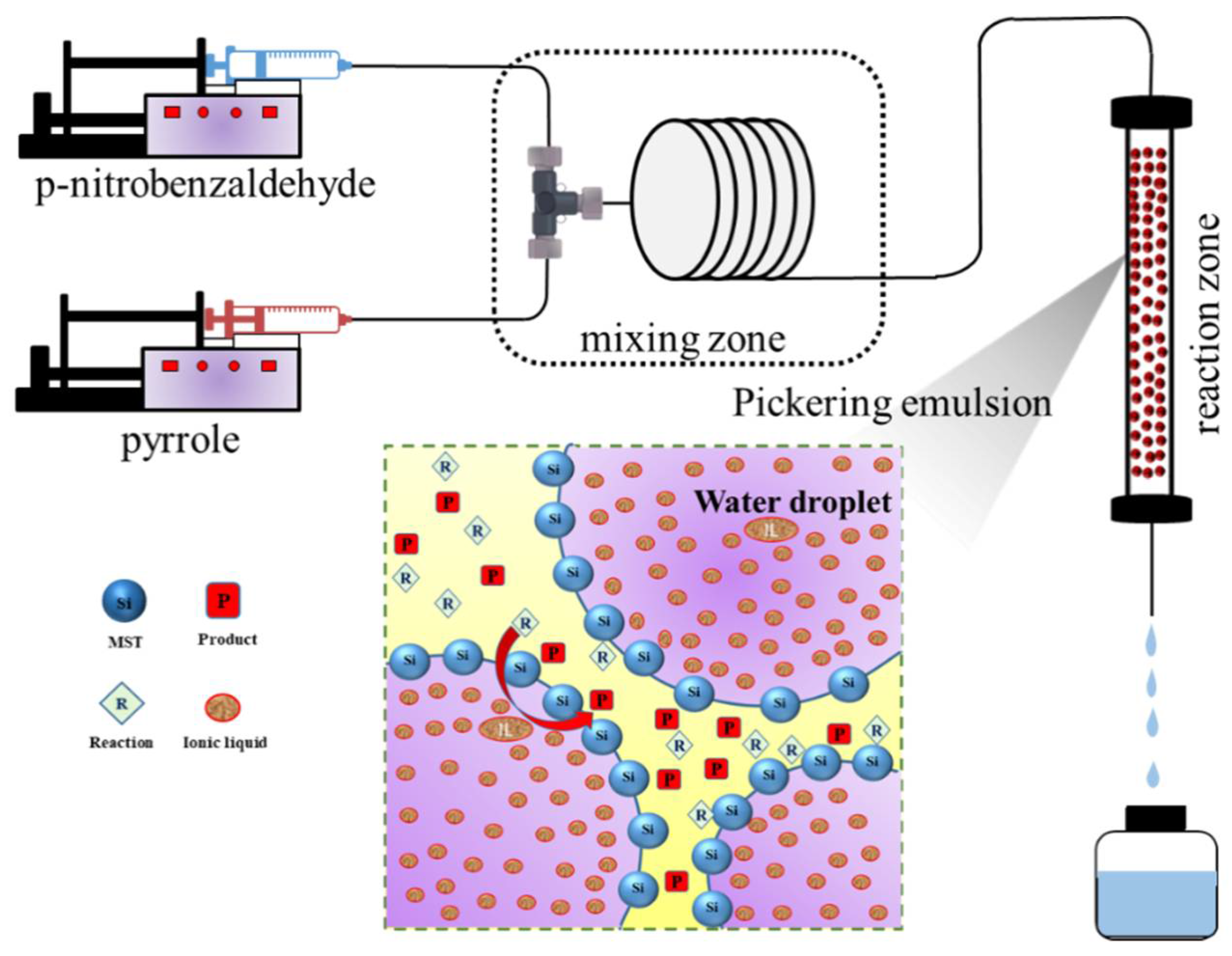
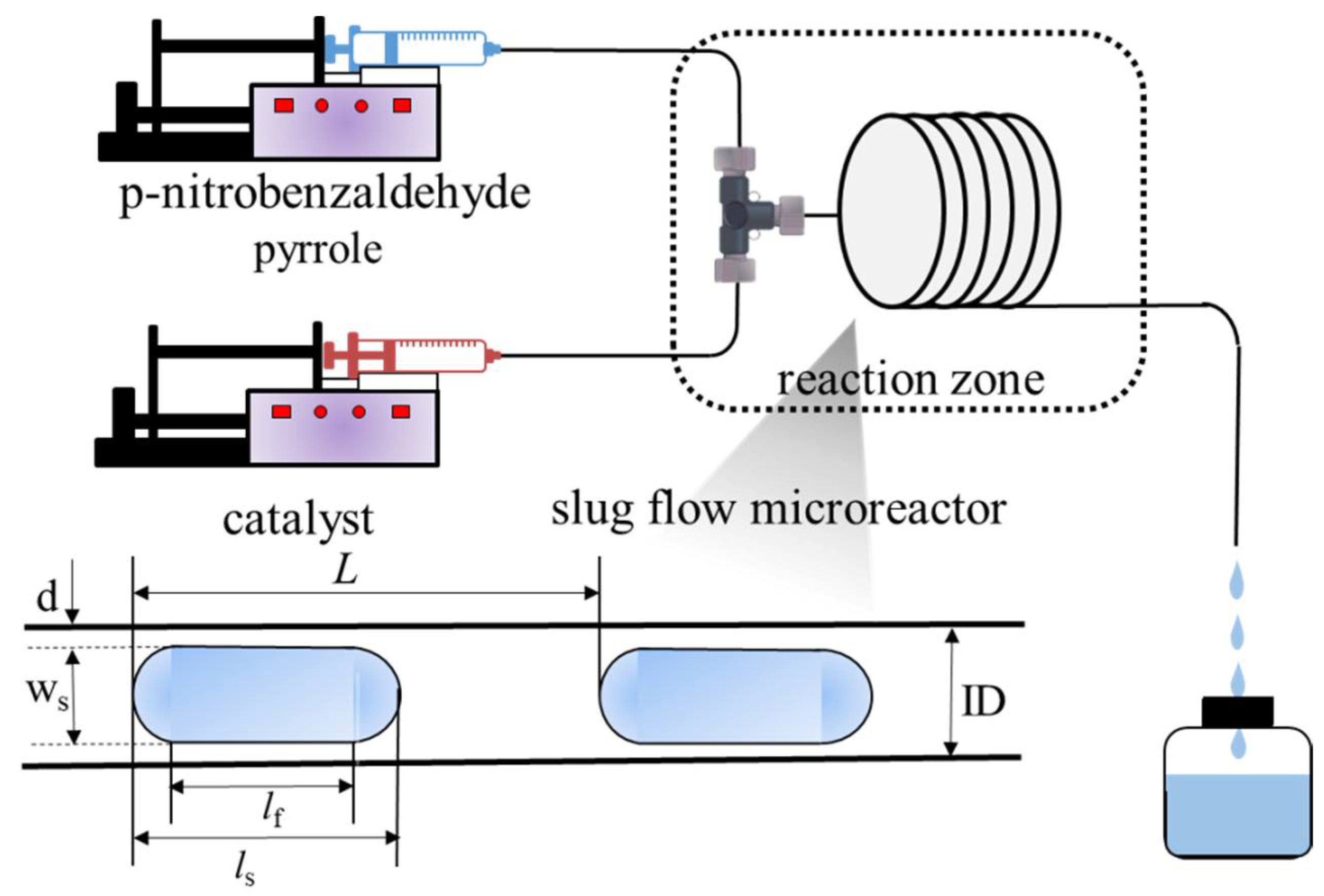
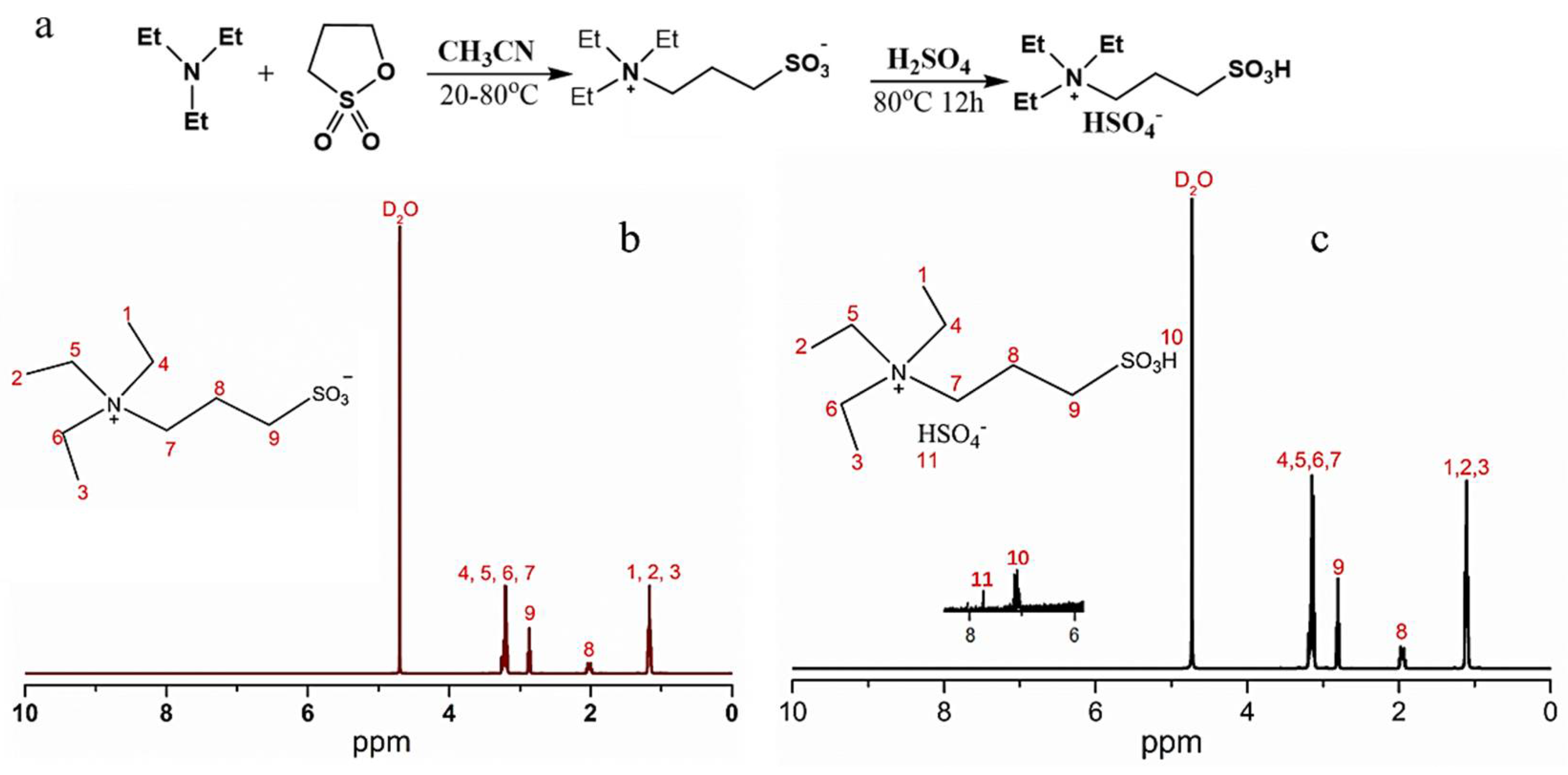
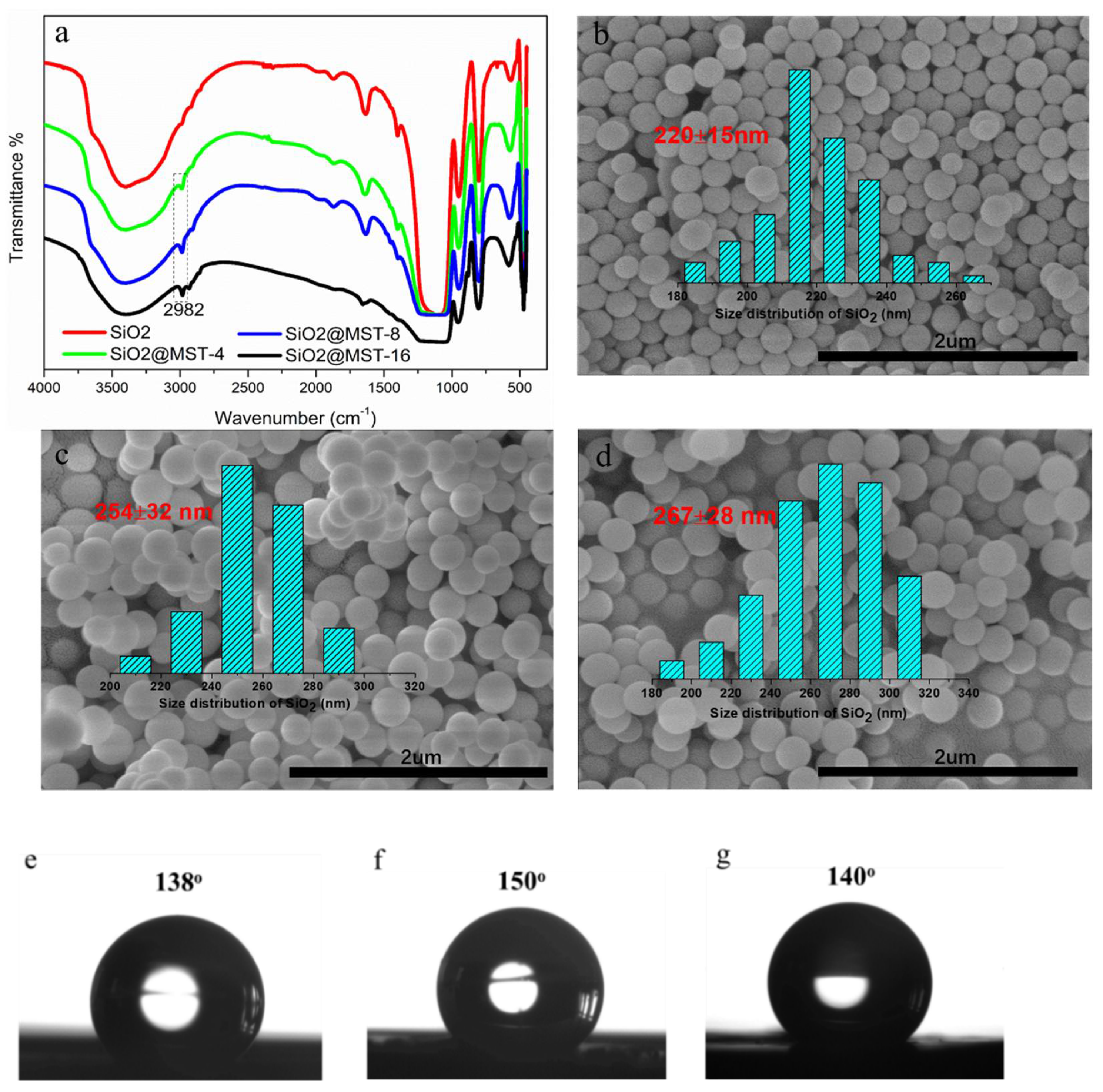
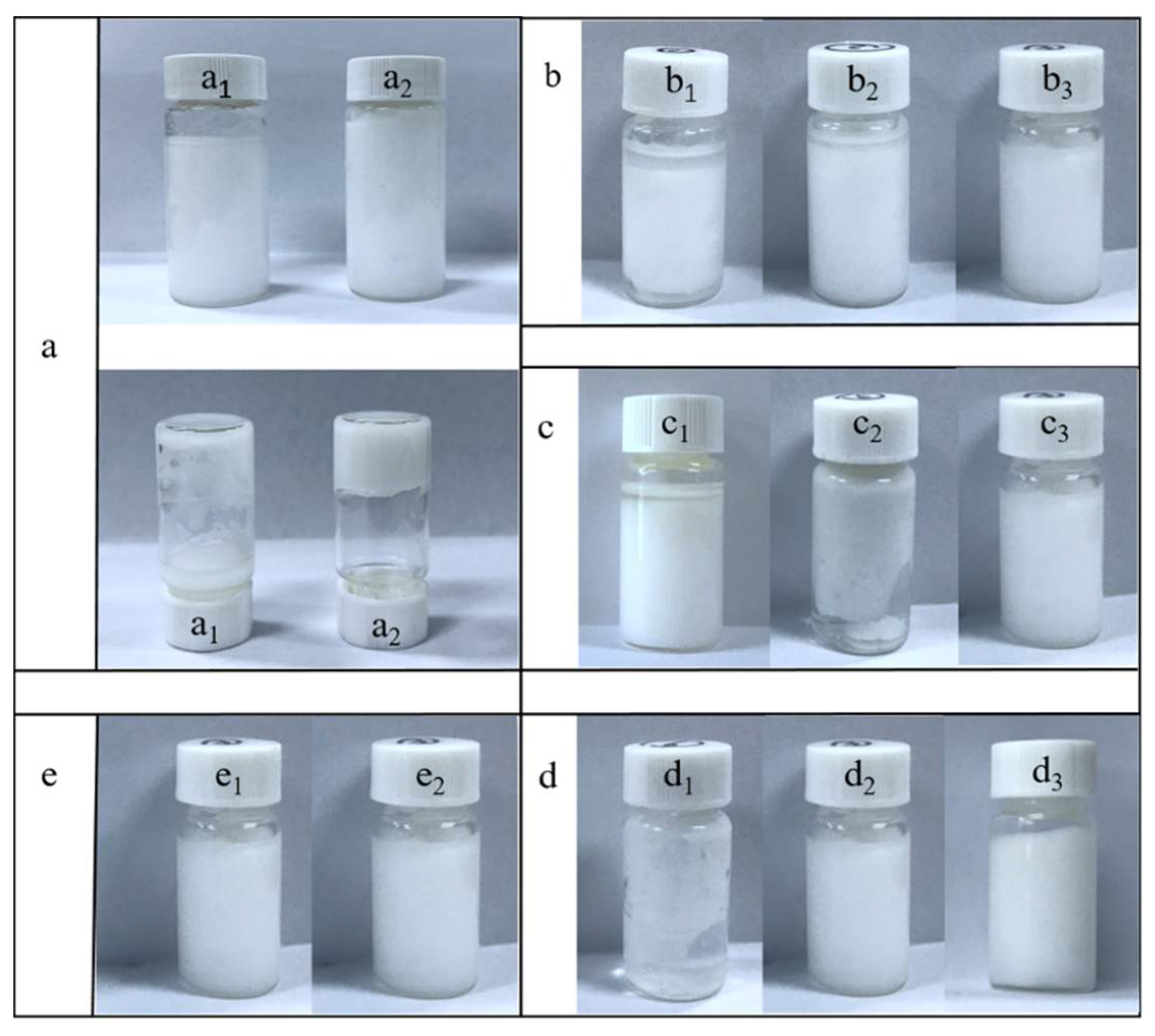

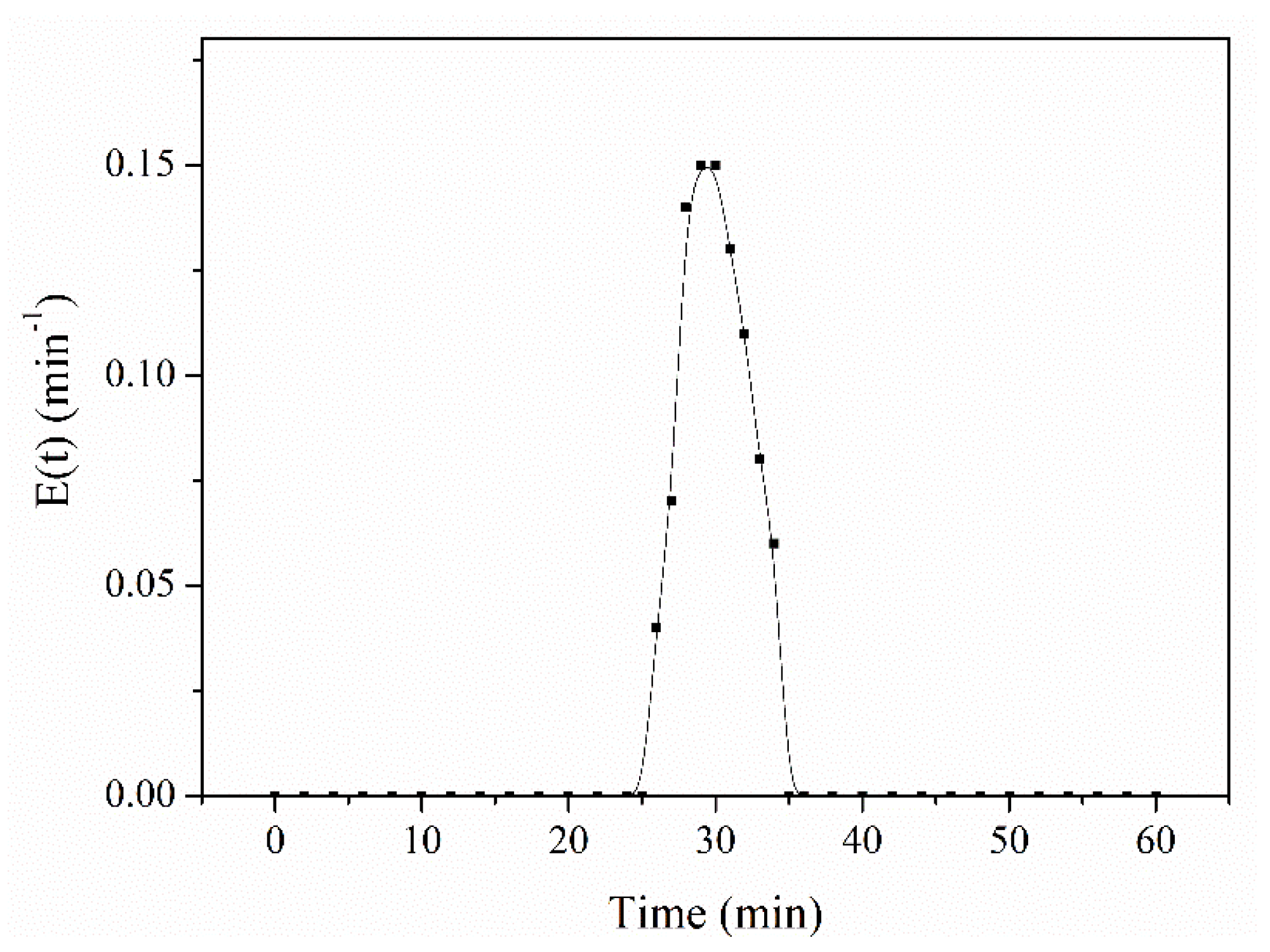
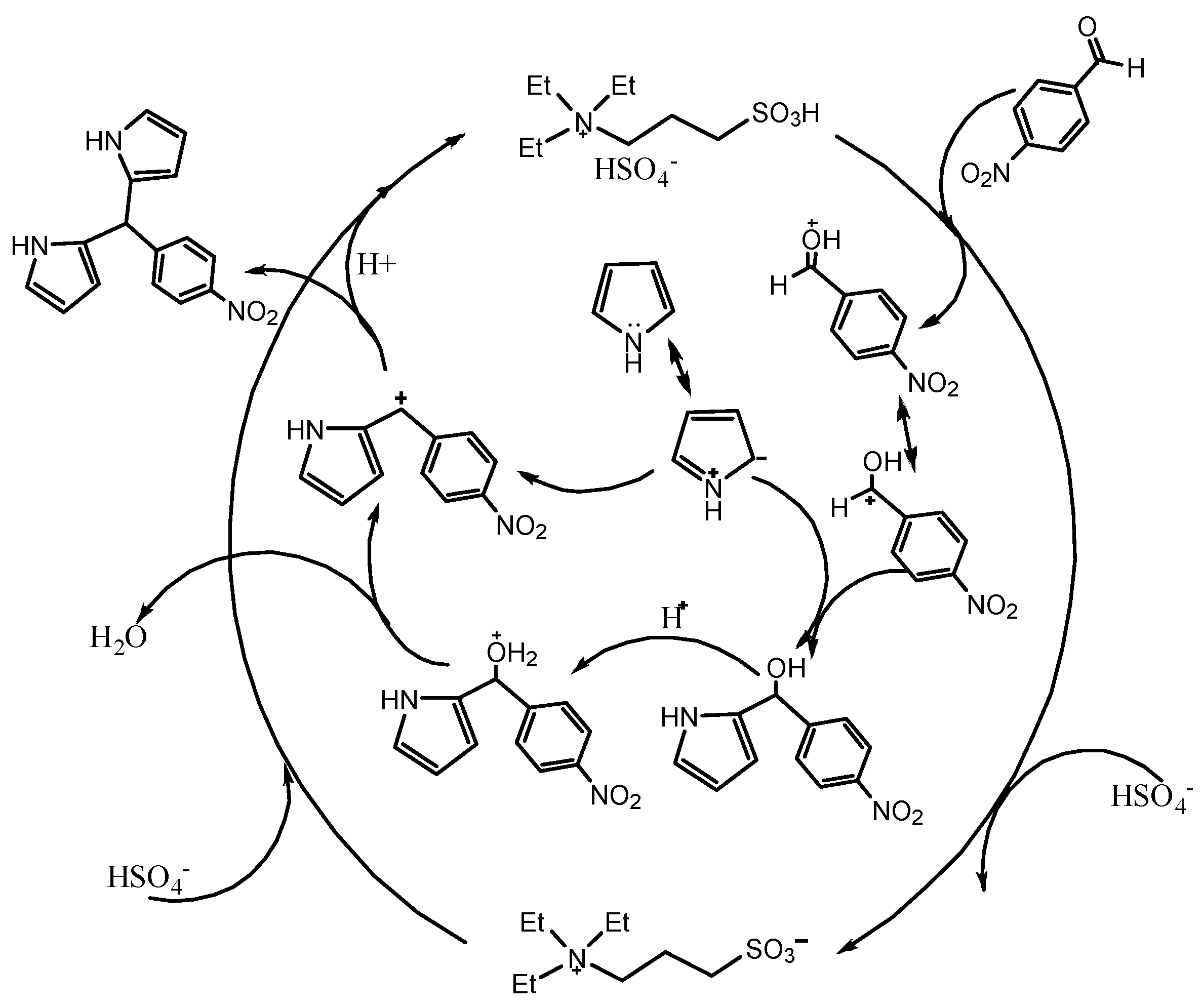
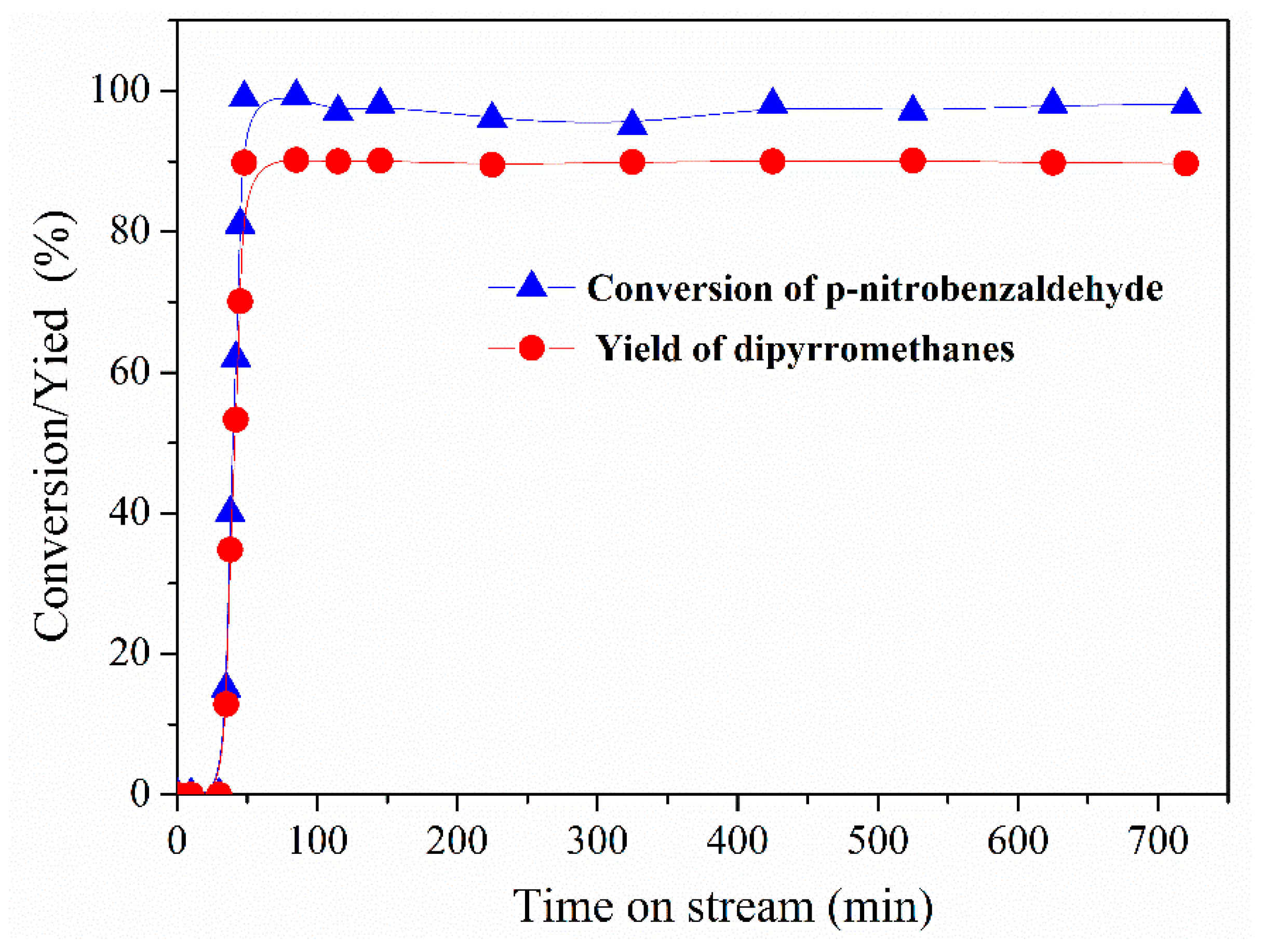
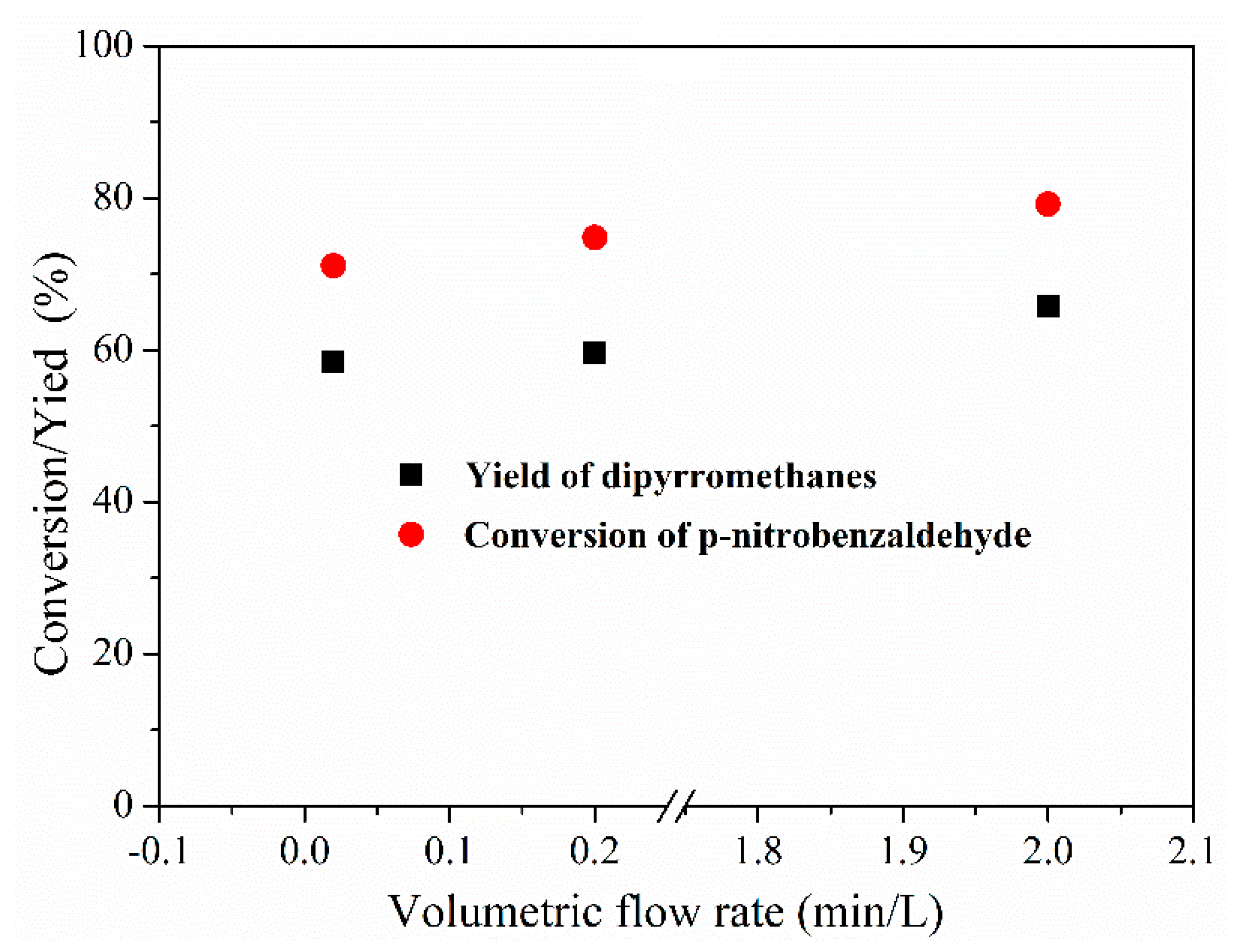
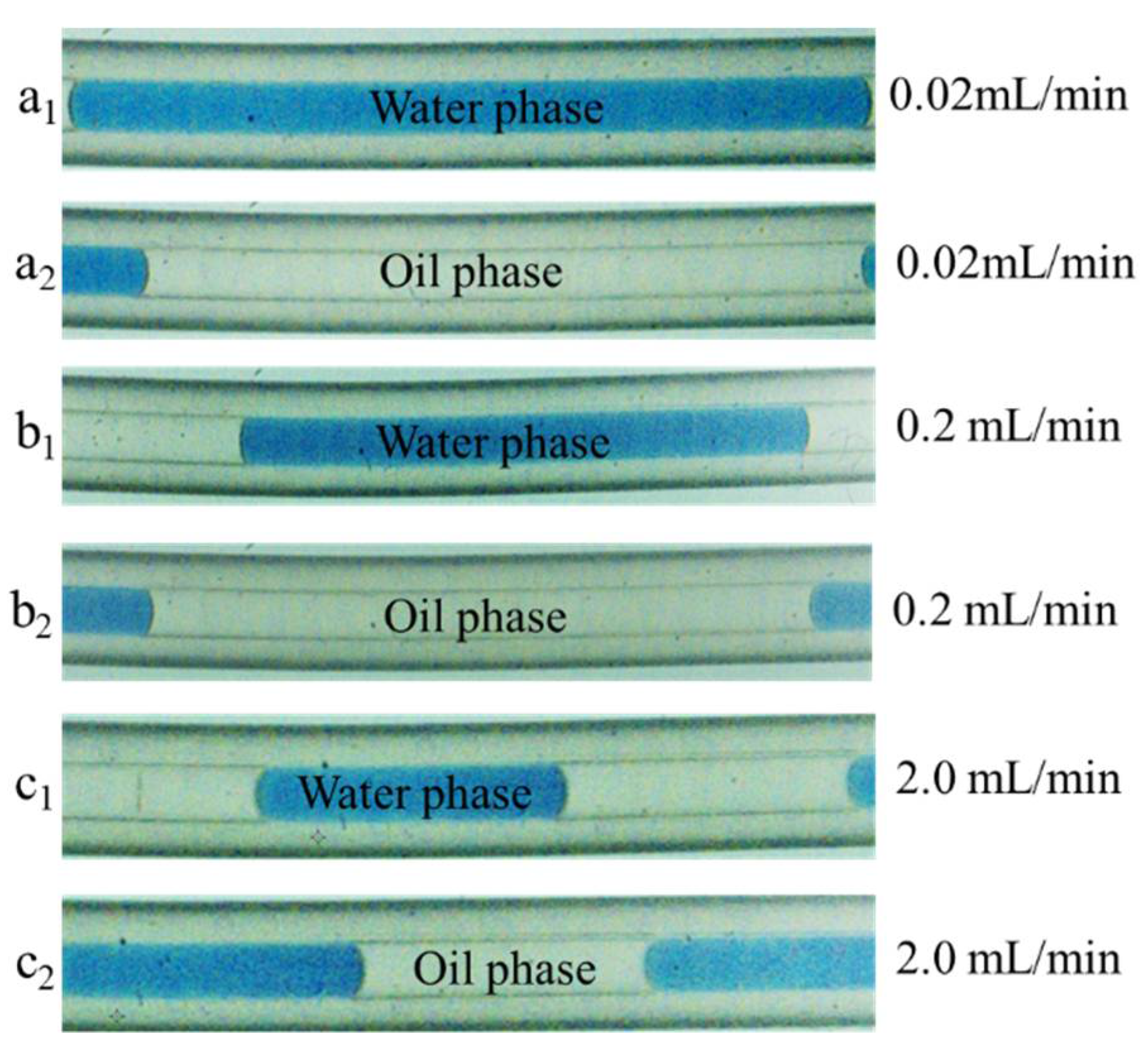
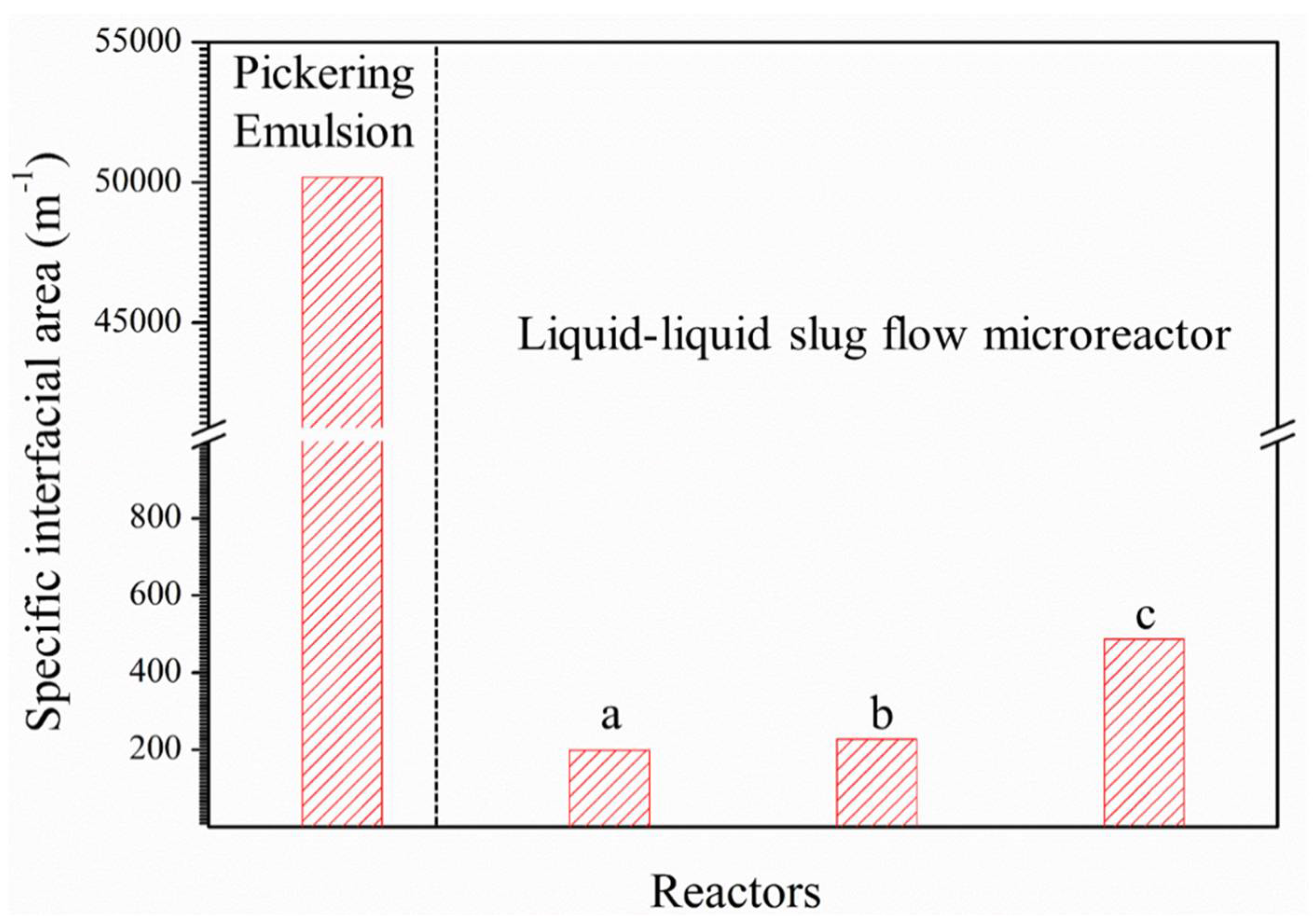
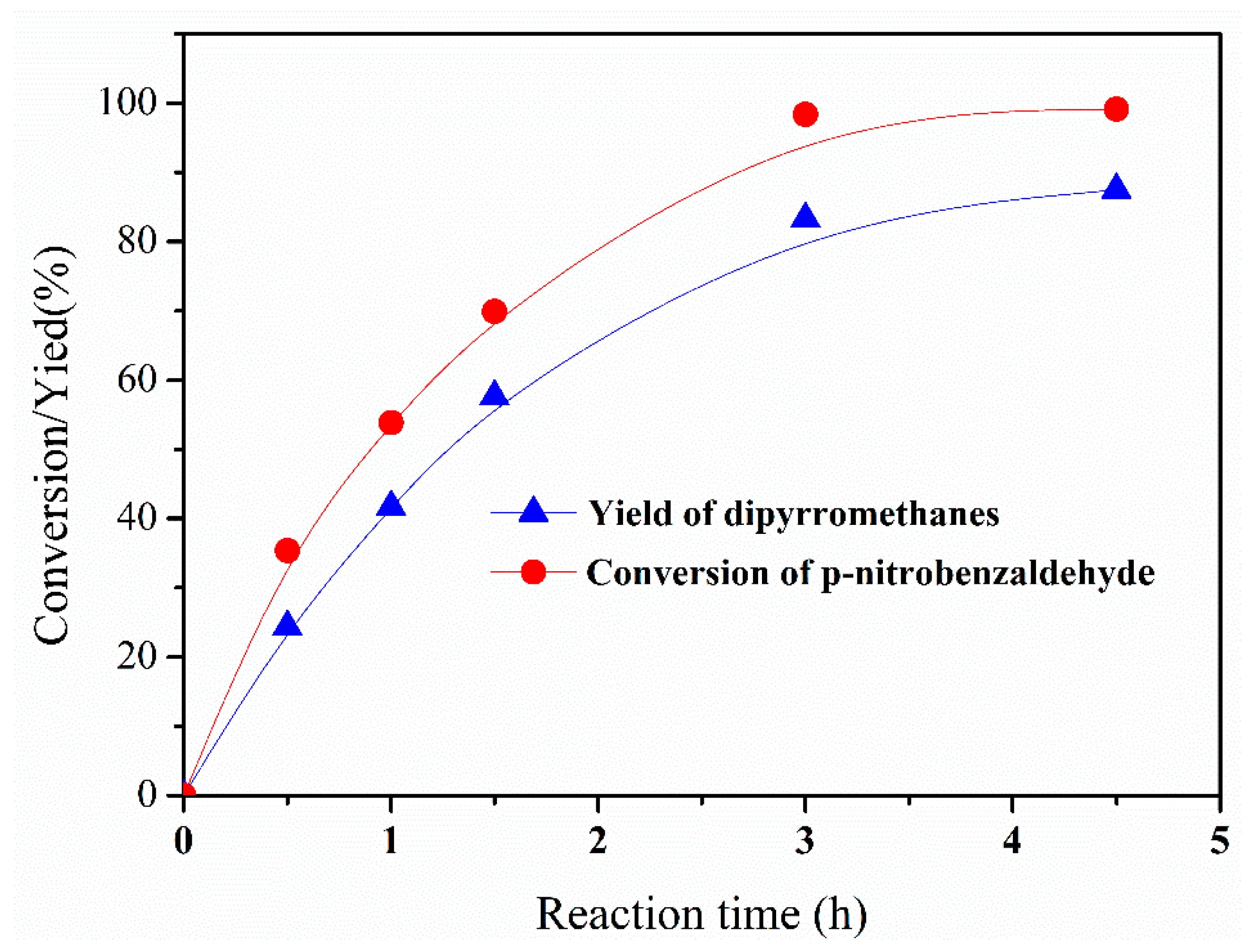
| Reactors | Reaction Time | Catalytic Condition | Yield | Reference |
|---|---|---|---|---|
| Batch reactor | 1 h | Acetic acid, n(pyrrole): n(aldehyde) = 2, solvent: THF/acetic acid = 9:1 | 35% | [6] |
| Batch reactor | 15 min | Catalyst: hydrochloric acid, n(pyrrole): n(aldehyde) = 2, water solvent, | 37% | [8] |
| Batch reactor | 4 min | 50 mg silica-supported sulfuric acid at room temperature, n(pyrrole): n(aldehyde) = 2 | 58% | [9] |
| Batch reactor | 10–15 h | Acid cation exchange resin, n(pyrrole): n(aldehyde) = 20 | 61% | [15] |
| Batch reactor | _ | Trifluoroacetic acid, V(pyrrole):V(aldehyde) = 25 | 56% | [16] |
| Batch reactor | 8 min | Catalyst: sulfated polyborate, n(pyrrole): n(aldehyde) = 2, solvent-free | 69% | [17]. |
| Batch reactor | 4.5 h | Catalyst: [TEAPS][HSO4], n(pyrrole): n(aldehyde) = 2.4 | 85% | This work |
| Pickering-emulsion-based packed-bed microreactor | 30 min | Catalyst: [TEAPS][HSO4], n(pyrrole): n(aldehyde) = 2.4 | 90% | This work |
Publisher’s Note: MDPI stays neutral with regard to jurisdictional claims in published maps and institutional affiliations. |
© 2021 by the authors. Licensee MDPI, Basel, Switzerland. This article is an open access article distributed under the terms and conditions of the Creative Commons Attribution (CC BY) license (https://creativecommons.org/licenses/by/4.0/).
Share and Cite
Zhang, H.; Shang, M.; Zhao, Y.; Su, Y. Process Intensification of 2,2′-(4-Nitrophenyl) Dipyrromethane Synthesis with a SO3H-Functionalized Ionic Liquid Catalyst in Pickering-Emulsion-Based Packed-Bed Microreactors. Micromachines 2021, 12, 796. https://doi.org/10.3390/mi12070796
Zhang H, Shang M, Zhao Y, Su Y. Process Intensification of 2,2′-(4-Nitrophenyl) Dipyrromethane Synthesis with a SO3H-Functionalized Ionic Liquid Catalyst in Pickering-Emulsion-Based Packed-Bed Microreactors. Micromachines. 2021; 12(7):796. https://doi.org/10.3390/mi12070796
Chicago/Turabian StyleZhang, Hong, Minjing Shang, Yuchao Zhao, and Yuanhai Su. 2021. "Process Intensification of 2,2′-(4-Nitrophenyl) Dipyrromethane Synthesis with a SO3H-Functionalized Ionic Liquid Catalyst in Pickering-Emulsion-Based Packed-Bed Microreactors" Micromachines 12, no. 7: 796. https://doi.org/10.3390/mi12070796
APA StyleZhang, H., Shang, M., Zhao, Y., & Su, Y. (2021). Process Intensification of 2,2′-(4-Nitrophenyl) Dipyrromethane Synthesis with a SO3H-Functionalized Ionic Liquid Catalyst in Pickering-Emulsion-Based Packed-Bed Microreactors. Micromachines, 12(7), 796. https://doi.org/10.3390/mi12070796







